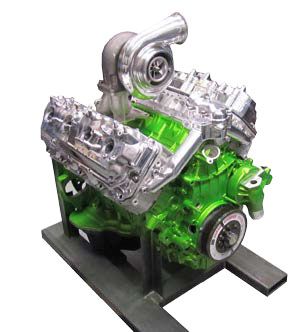There’s a lot of things to look for there, but if you’re not going to take a sample there are other things you can look for yourself. You can look at the oil itself. Now, most diesel you’re going to be pretty black that’s just normal.
If you’ve never looked at a diesel engine you probably dipstick as 2000 miles since the last door changes the oil is probably gonna be fairly dark Samak some exceptions to that but most diesel engines are gonna have black oil.

After a few 1000 miles. Now, other than the oil just being black, you need to look at the condition of the oil. Now, by that, if you’re wearing gloves, you can rub the oil between your fingertips. You can do this without gloves, of course, but it should be slightly tacky as you separate the oil between your finger and your thumb. It should stick a little bit. If it doesn’t, that can indicate fuel dilution without getting a sample, that’s a good way to tell you can smell the oil, you would be looking for any sort of weird like coolant sense. Normally coolant oil in high enough concentrations will turn the oil kind of.
It’s kind of a grayish Manny’s color also rust on the dipstick tube is an indicator that you’ve had moisture usually coolant in the crankcase or currently have it in the crankcase and that’s bad that can be a really big expensive repair so check for rust on the dipstick tube.
Outside of that, there’s not a lot you can look for in the oil itself just by looking at it so I recommend an oil analysis, if the current owner will let you pull one, if you want, maybe he’s trying to hide something, or maybe he doesn’t want to wait a week for you to get your oil sample back okay so moving on from your fluids, you want to do a visual inspection of the engine itself.
Now you’re most likely not gonna see any mechanical damage to the engine, but you do want to look for signs of it. You don’t want to see any patch drops to the block or the head as far as like someone maybe putting JB weld on components or some have mismatch pain over certain parts that can indicate, maybe not the best repair to something.
And I’ve seen a lot of blocks and heads and aluminum components that have had some sort of JB weld done to them, oil pans, as well. That can indicate a previous failure, and not a good repair dropped onto it. But those are relatively rare.
Usually what you’re looking for are leaks. And what I mean by leaks is coin exhaust and oil leaks. Now coolant leaks, of course, mostly hoses, but you might see let’s say you have, you can see a coolant stream or evidence of a cold stream out of an exhaust port.
That’s a bad sign that could mean of course you have a coolant leak in a cracked head or an AGR cooler, or head gasket or an oil leak. We’re structure on the block or the block and the rear structure that can be bad.
That’s a really expensive fix on any engine because you’re gonna have to pull the transmission in a polar structure.
Now, most older diesel engines are gonna have some sort of evidence of oil weeping past a seal or sealant. And just because there’s a little bit of black soot or black oil residue on a seam. If it’s not wet or dripping.
Not really a huge reason to be concerned about it, especially in large themes such as the structures or the head to the block, but just thought, you know, of course, there shouldn’t be any there, it’s just older diesel typically have some sort of oil residue somewhere on them. If it’s not dripping now, it wouldn’t really constitute a leak. Now of course hoses things like that that are relatively cheap, easy to fix.
As far as coolant leaks. Now the other one you need to look for is exhaust leaks. And these can be hard to find sometimes because the exhaust leak won’t typically show itself on the exhaust manifold or the turbocharger because the carbon that leaks out of the exhaust is going to burn off those components because they’re so hot so what you’re going to be looking for is on the head or the block by the exhaust any sort of Black Soot not oily black so it just, it almost looks burned, that one cake and exhaustively, and even though exhaust leaks usually just the gaskets blew out the gasket usually blows out because you have a fastener fail.
Now you might have a broken start or exhaust bolt in the head, or the turbocharger. And if you can’t get it out you might have to buy a new cylinder head or new turbocharger or a new exhaust manifold, you’re talking 1000s of dollars, especially if it’s the head.
If those components cannot be properly repaired with a new fastener depending on what’s broken, of course. Now the next step of course is to run the engine, and you might want to say oh we need to listen to the engine, yes you do need to listen to the engine. The problem with diesel. Read more
Write for us
Vikas Sudan is the SEO Manager at whisskers marketing, an United States digital marketing agency. An expert in Digital Marketing and Blogging, He never misses an opportunity to spread the knowledge and share the industry’s best practices. Vikas Sudan is present on social media like Facebook, Instagram, LinkedIn, Pinterest & Twitter also.